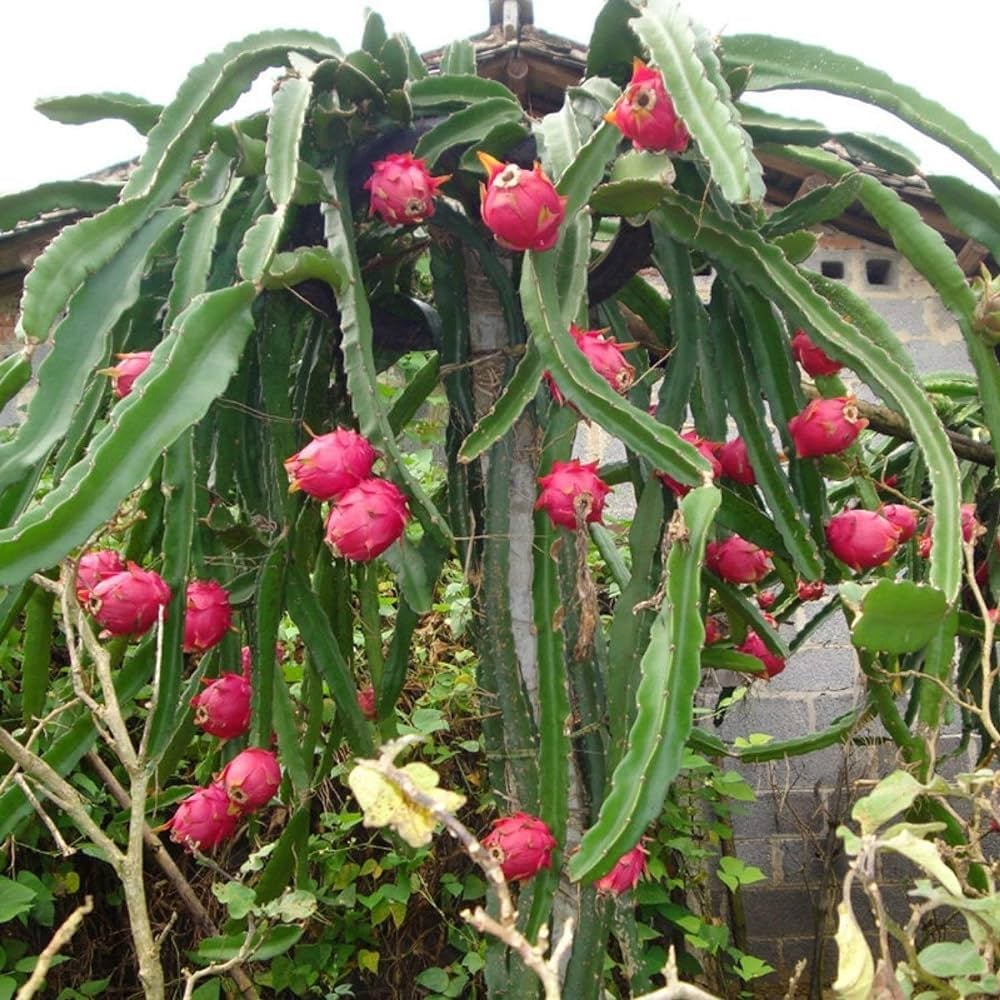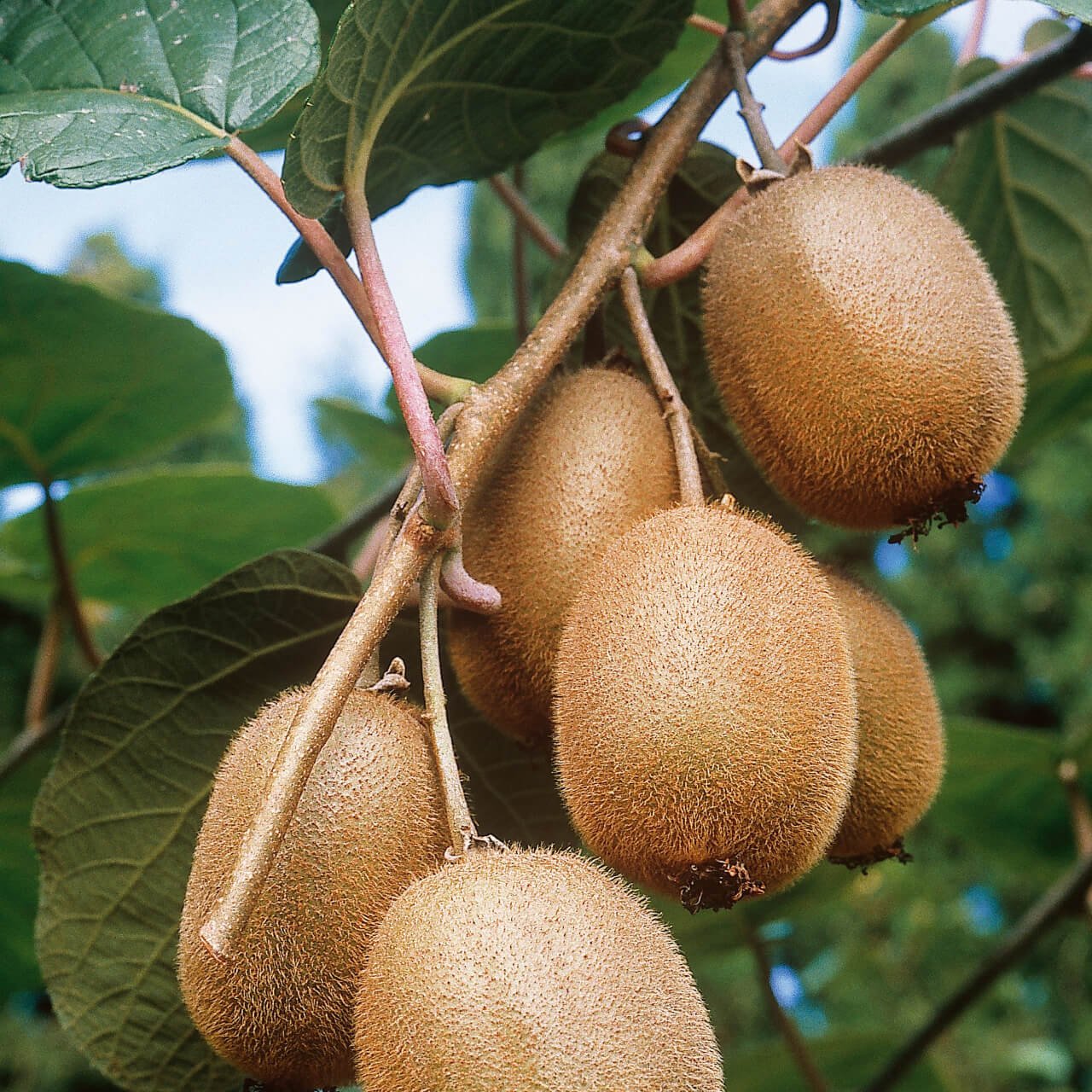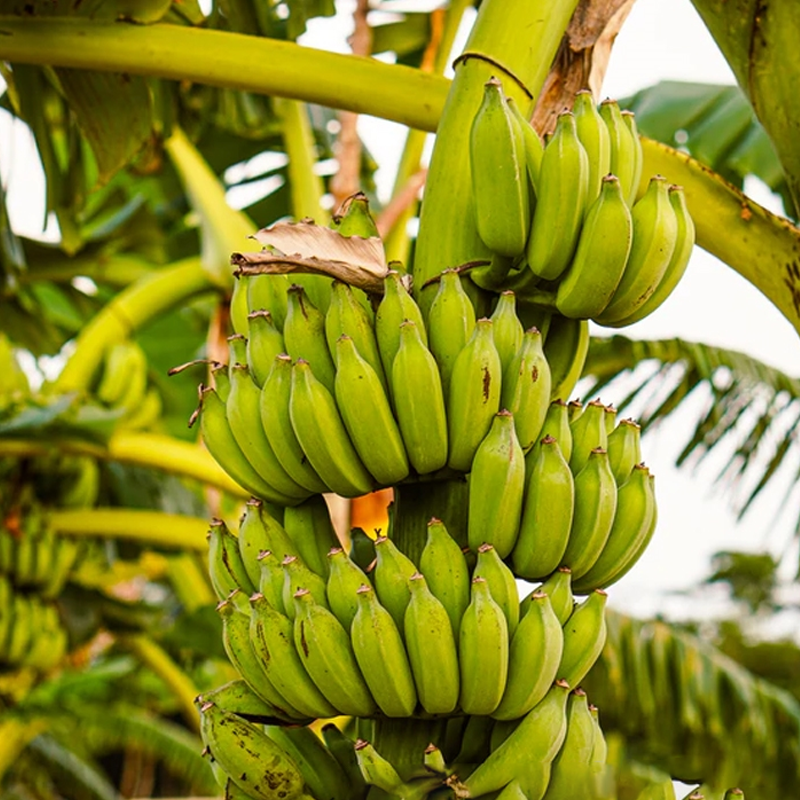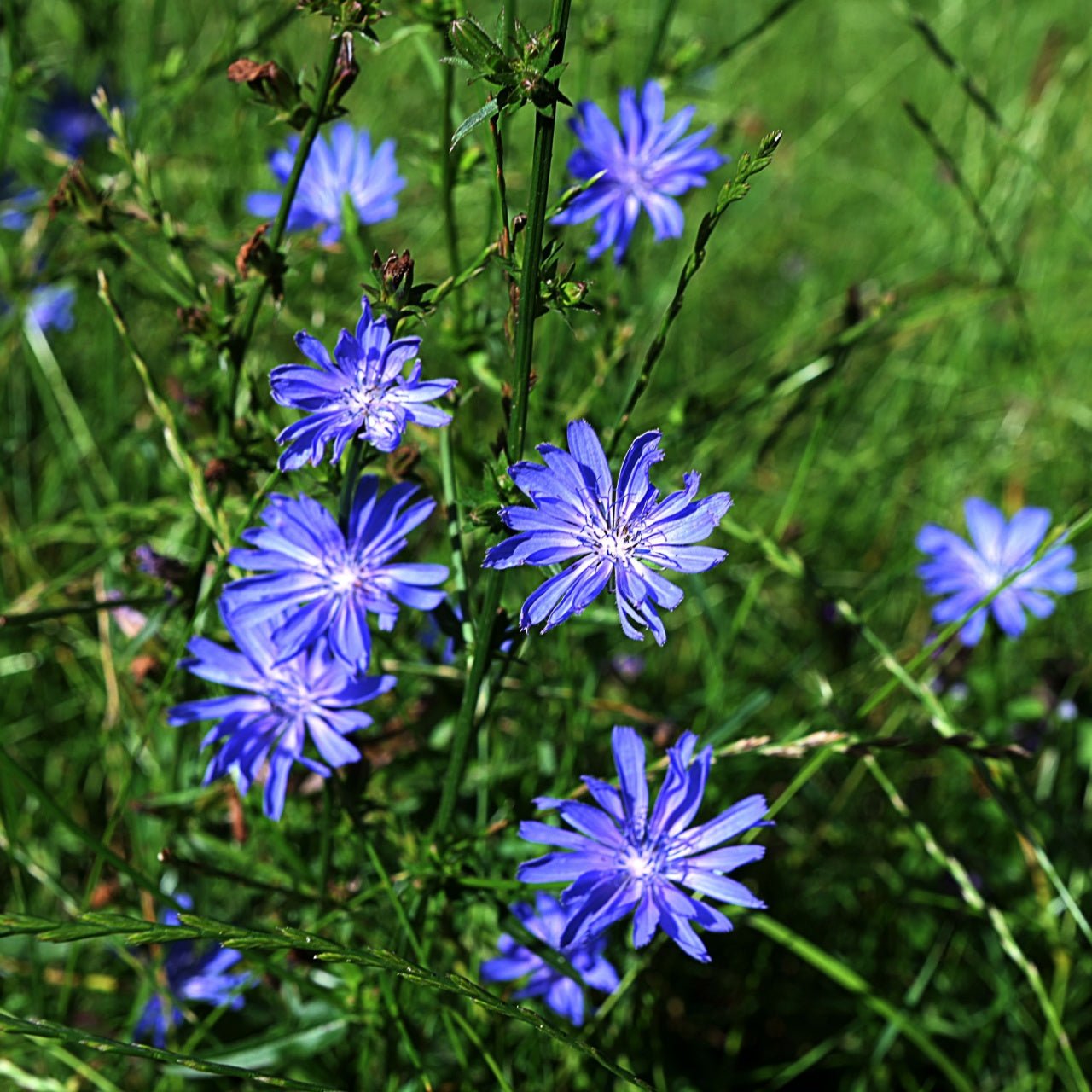



Chicory
Attracts beneficial pollinators
Low maintenance perennial plant
Drought-tolerant and hardy
Thrives in
ZONE 3ZONE 4ZONE 5ZONE 6ZONE 7ZONE 8ZONE 9This plant ships:
Ships Week of May 12th1 Year Guarantee on all plants
Chicory - Cichorium intybus
Chicory (Cichorium Intybus) is a perennial plant native to Europe, north Africa and western Asia. Since it has been brought to the United States, it is now commonly seen in areas that receive abundant rain and is considered to have cosmopolitan distribution.
The leaves of the this plant are lanceolate in shape and unlobed and can grow to 1 ft in length at the base of the plant. The flowers of this plant are a unique shade of electric blue. They begin to bloom in early spring and will continue to bloom through autumn. Reaching a height of up to 5 ft, this plant is ideal for borders where it can be grown behind other shorter perennials.
Plant Details - Chicory
Family: Asteraceae
Hardiness Zones: 3–9
Light Requirement: Full sun
Water Needs: Moderate
Height: Up to 5 ft
Spread: 1 ft
Growth Rate: Moderate to fast
Bloom Time: Summer through autumn
Flower Color: Bright blue, sometimes white
Wildlife Value: Attractive to pollinators
There are many varieties of this plant, some are cultivated for salad leaves, such as radicchio. Others varieties are cultivated for the “chicon”, the blanched bud of the plant, which are used for their slightly bitter flavor and crunchy texture in complex salads and other dishes. Even the roots are consumed. They can be dried, roasted and ground into a delicious coffee substitute or food additive. Grow this plant in an edibles garden or as a part of a beautiful perennial display. It can be enjoyed for its aesthetic beauty and elegance in the garden and later added to your salad for a flavorful experience.
Landscape Uses and Maintenance - Chicory
Chicory does best in moist and well-drained soil that receives full sun conditions. While it does have some drought tolerance, it grows most optimally in cool summer climates.
It is an easy plant to grow and does not have any regular pest or disease issues. It can be weedy in some areas and it will intrude into disturbed locations of the yard, however it can be controlled with regular attention to newly sprouted seedlings. This plant is a wonderful addition to the garden and pollinators will be enticed by their flowers.
Noteworthy Characteristics
Entirely edible, electric blue flowers, attractive to pollinators.
Plant this elegant, slender and towering perennial as a charming border addition. It will add to the visual appeal to any garden and will provide a yummy snack for you and yours. Shop for Chicory online at TN Nursery. For 68 years, we have served the landscaping industry and homeowners with specimen plants.
This Is How Your Plants Will Look upon Delivery
Bloom Season
Spring
Bloom/Foliage Color
Blue
Height at Maturity
Over 12"
Care
Chicory thrives in well-drained soil with regular, moderate watering. It is hardy and tolerant of various temperatures. Harvest young leaves for a mild taste, or let the plant mature for a more robust flavor.
Plant Reproduction
Chicory spreads by seed and by pieces of its roots.
Shipping date depends on the date displayed and chosen when you order from the product's page.
We only accept returns on plants verified dead. If you think your plants have died, we offer a 1 year warranty, please use this File a Claim Link to verify dead plants and start with return warranty process.





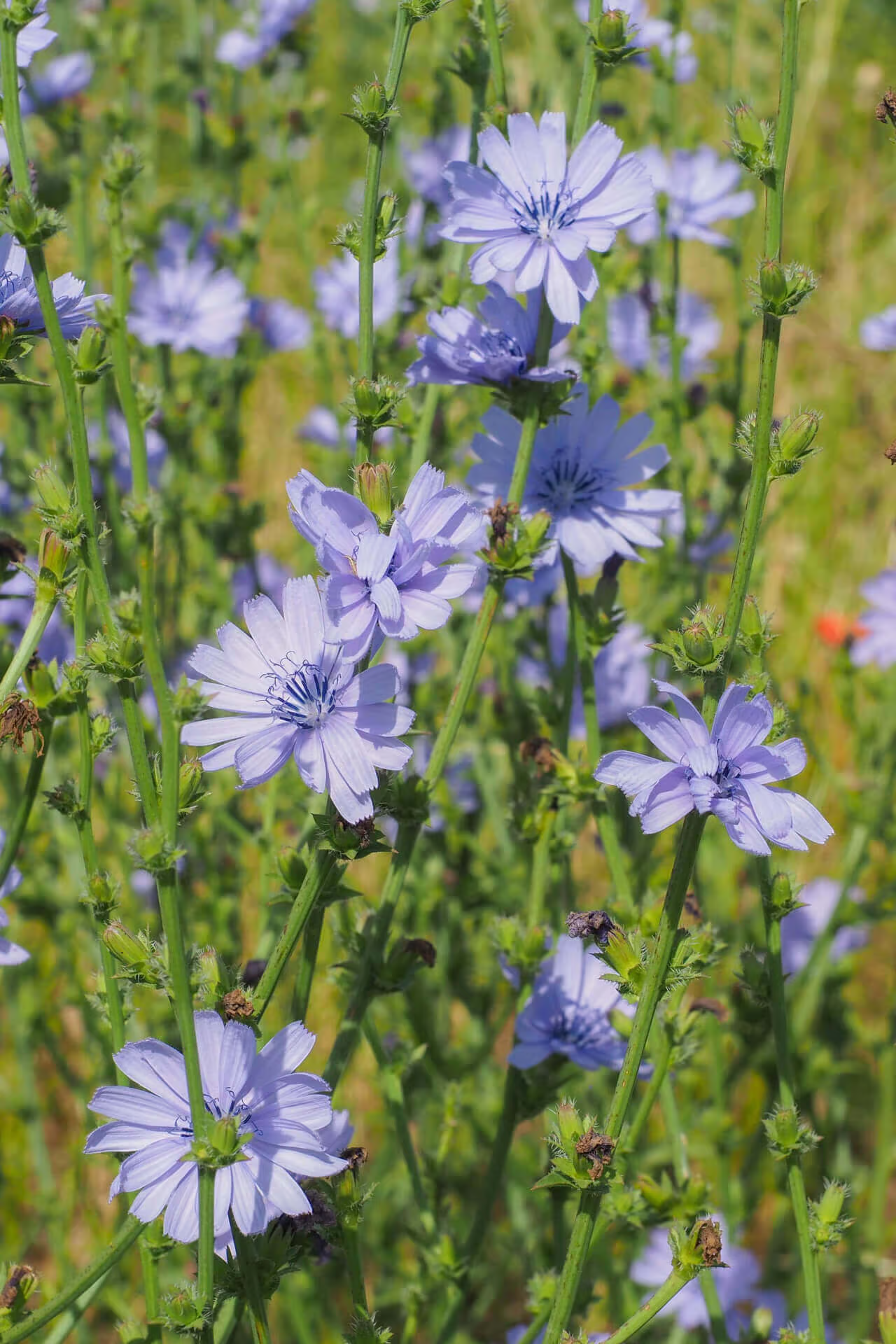
Charming Leaf Structure:
The plant's leaves vary by age, with attractive curly leaves at the base in the first season and smaller, stem-clasping leaves in subsequent seasons. This distinctive leaf pattern adds additional visual interest.
Erosion Control:
Beyond their beauty, Chicory plants help prevent soil leaching and erosion, contributing to the overall health and stability of your garden. They’re as functional as they are attractive.
Dynamic Growth:
Chicory plants grow up to 5 feet tall but are typically around 2 feet, forming a lovely canopy when planted in clusters. Their daily blooming cycle offers a fresh display of flowers throughout the spring and summer.
Pollinator Magnet:
Chicory's vibrant blue flowers attract bees, butterflies, and other beneficial insects, enhancing garden biodiversity. This support for local pollinators boosts the fertility and productivity of the entire landscape.
Caring Tips
How do I care for my Chicory?
Each box contains detailed care instructions and information about your product. But here's the basics.
Care Tips
Chicory thrives in well-drained soil with regular, moderate watering. It is hardy and tolerant of various temperatures. Harvest young leaves for a mild taste, or let the plant mature for a more robust flavor.
Light Requirements
Chicory grows best in full sun, requiring at least 6-8 hours of direct sunlight daily. While it can handle partial shade, optimal growth and flavor are achieved with ample sunlight.
Hardy Planting Zones
3 • 4 • 5 • 6 • 7 • 8 • 9
Header
Use this content to share information about your store and products.
Frequently Asked Questions
How often should I water my plants?
How do I know if my plant is getting too much or too little sunlight?
What should I do to prepare my plants for winter?
What are the signs that my plant needs fertilizing?
How can I prevent pests from damaging my plants?
How do I choose the right plant for my climate zone?



